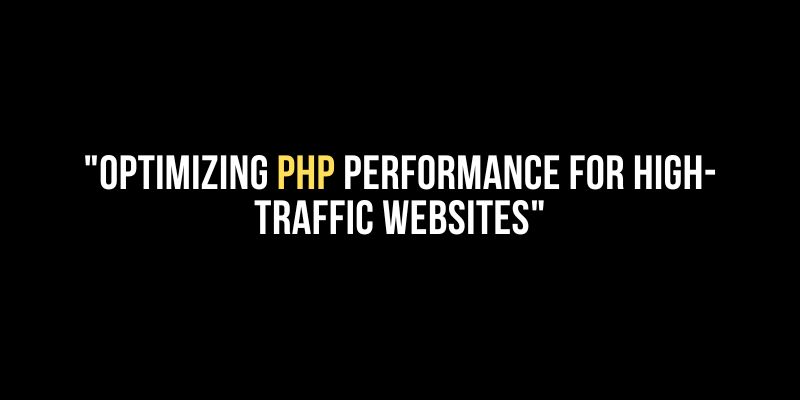In the fast-paced digital landscape, website performance is non-negotiable. High-traffic websites, in particular, demand exceptional speed and responsiveness. In this article, we’ll delve into the world of PHP, a popular scripting language, and explore effective strategies for optimizing PHP performance to meet the demands of high-traffic web environments. Choose PHP Training in Chennai or the Learn PHP Online provided by FITA Academy to improve your PHP development path. Take the first move towards becoming a skilled PHP developer by enrolling right away.
Understanding PHP’s Role:
PHP, which stands for Hypertext Preprocessor, is a server-side scripting language widely used for web development. It powers numerous websites and web applications, making its performance optimization crucial for delivering a seamless user experience.
Key Strategies for PHP Optimization:
1. Upgrade to the Latest PHP Version
Staying up-to-date with the latest PHP version is fundamental. Each new release includes performance enhancements and security fixes. Upgrading ensures that your website benefits from these improvements.
2. Utilize Opcode Caching
Opcode caching tools like OPCache or APCu significantly improve PHP performance by storing compiled PHP scripts in memory. This reduces the need for script recompilation, resulting in faster execution times.
3. Optimize Database Queries
High-traffic websites often rely heavily on databases. Ensure your SQL queries are well-optimized, use proper indexing, and avoid unnecessary joins to minimize database load.
4. Implement Content Delivery Networks (CDNs)
CDNs distribute your website’s assets (images, CSS, JavaScript) across multiple servers globally. This reduces server load and minimizes latency, leading to faster page loading times.
5. Use Caching Mechanisms
Implement full-page caching to serve static content to users. Tools like Varnish or Redis can help cache dynamic content, reducing server strain.
6. Enable GZIP Compression
Compressing your website’s content before sending it to the user’s browser reduces data transfer and speeds up page loading.
To enhance your PHP development journey, consider the PHP Course in Chennai or the PHP Online Course offered by FITA. Enrol now and take a step towards becoming a proficient PHP Developer.
7. Minimize HTTP Requests
Reduce the number of HTTP requests by combining CSS and JavaScript files and utilizing sprites for images. Fewer requests mean faster loading times.
Transition Words and Active Voice:
To ensure clarity and coherence in this article, we’ve incorporated transition words, facilitating a smooth flow of information. Furthermore, the content maintains an active voice, making it engaging and concise.
Conclusion:
In the competitive online landscape, high-traffic websites must prioritize performance optimization. By implementing the strategies outlined above, you can significantly enhance the speed and responsiveness of your PHP-powered website. Remember that ongoing monitoring and fine-tuning are essential to adapt to changing traffic patterns and evolving web technologies.
Optimizing PHP performance is not a one-time task; it’s an ongoing commitment to delivering an exceptional user experience to your audience. Invest in performance optimization today, and your high-traffic website will continue to thrive in the digital world.


